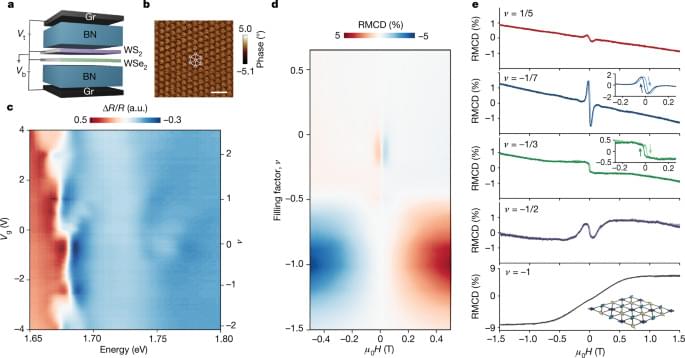How much fun can you have on a Friday night with nothing but an VR headset?
“Britain moves closer to a self-driving revolution,” said a perky message from the Department for Transport that popped into my inbox on Wednesday morning. The purpose of the message was to let us know that the government is changing the Highway Code to “ensure the first self-driving vehicles are introduced safely on UK roads” and to “clarify drivers’ responsibilities in self-driving vehicles, including when a driver must be ready to take back control”.
The changes will specify that while travelling in self-driving mode, motorists must be ready to resume control in a timely way if they are prompted to, such as when they approach motorway exits. They also signal a puzzling change to current regulations, allowing drivers “to view content that is not related to driving on built-in display screens while the self-driving vehicle is in control”. So you could watch Gardeners’ World on iPlayer, but not YouTube videos of F1 races? Reassuringly, though, it will still be illegal to use mobile phones in self-driving mode, “given the greater risk they pose in distracting drivers as shown in research”.
The official start of Atlantic Hurricane Season is less than six weeks away, and forecasters will be getting an essential upgrade just in time for the season to begin.
New technology from the University of Wisconsin will help with preparation of more detailed forecasts and provide more reliable information to meteorologists and emergency planners, which should ultimately result in better, safer outcomes for public safety.
The Advanced Dvorak Technique (ADT) is a satellite-based method for determining tropical cyclone intensity. Planned upgrades include the use of full-resolution images from weather satellites, better identification of the location of each storm’s eye and the ability to better analyze hurricanes occurring outside tropical regions.
High-tech advances in weapons technologies and a return of ‘great power nuclear politics’, risk the world ‘sleepwalking’ into a nuclear age vastly different from the established order of the Cold War, according to new research undertaken at the University of Leicester.
Andrew Futter, Professor of International Politics at the University of Leicester, makes the warning in a research paper for the Hiroshima Organization for Global Peace (HOPe), published today (Friday).
While stockpiles are much reduced from the peak of up to 70,000 nuclear weapons seen in the 1980s, progress in a number of new or ‘disruptive’ technologies threatens to fundamentally change the central pillars on which nuclear order, stability and risk reduction are based.
Please welcome a second posting here at 21st Century Tech Blog, from Katie Brenneman. Katie’s previous contribution looked at how individuals can practice sustainability to mitigate the threat of climate change. Her many interests include writing on lifestyle, mental health, and sustainability. You can follow her on Twitter.
In this contribution, Katie has chosen a timely topic: the increasing consumer interest in electric vehicles (EVs). The recent stratospheric rise in gasoline and diesel prices because of Russia’s invasion of Ukraine has made EVs far more attractive. That plus more announcements about new EV models, i.e., The Ford Lightning (an EV version of the F-150) may prove to be the moment when North Americans begin a rapid move away from fossil-fuel-powered vehicles?
As fuel prices continue to rise around the world, many consumers are taking another look at EVs as a potential solution for their transportation needs. This follows historical trends that show whenever there is a spike in gas and diesel costs it is accompanied by an increase in EV sales. Online searches for EVs continue to double with many in the renewable energy sector wondering if this is the watershed moment that will finally move us to take zero-emission actions seriously.
What would it be like to be a Type 4 human? Join us… and find out!
Subscribe for more from Unveiled ► https://wmojo.com/unveiled-subscribe.
Live like a god in the future! In this video, Unveiled takes a closer look at what day-to-day life would be like in a Type 4 civilization on the Kardashev Scale. What would you do? Where would you go? And what would you do to pass the time? Let us know in the comments if you like the idea of Type 4… or if you’d rather the future was different?
This is Unveiled, giving you incredible answers to extraordinary questions!
Find more amazing videos for your curiosity here:
Everyday Life in a Type III Civilization — https://youtu.be/OF_ThGILANQ
Are We the Creation of a Type V Civilization? — https://youtu.be/T_u4lGDs3dM
0:00 Intro.
The study was done by the international Jefferson Lab Angular Momentum (JAM) collaboration using data from the MARATHON experiment, which is at the Thomas Jefferson National Accelerator Facility in the US. The team’s results could help physicists better understand how quarks are distributed inside protons and neutrons and why these distributions are different when protons and neutrons are incorporated within nuclei.
After reaching a historic low, the population of monarch butterflies overwintering in California has increased a hundredfold, according to the annual Western Monarch Thanksgiving Count. More than 247,000 butterflies were counted in 2021, up from 2,000 butterflies in 2020.
“We’re ecstatic with the results and hope this trend continues,” said Emma Pelton, the western monarch lead with Xerces Society, the organization that manages the annual count.
Each year, volunteers and scientists count the orange-winged wonders in their overwintering locations, 283 sites this year. The highest number of monarchs (95,000) was reported from Santa Barbara County, including a single site on private property with 25,000 butterflies. Very few butterflies were seen in the San Francisco Bay area, with only 600 counted at overwintering sites from Mendocino to San Mateo counties.
A study reveals light as a new dynamic knob to control ferromagnetic order in moiré superlattices.
This is a 10-minute version with my picks on an hour-and-a-half interview on the longevity science made by Rhonda Patrick to Morgan Levine.
The link to the entire interview, which took place on April 12, 2022, is in the description of the video.
The interview took place on April 2022.
Morgan Levine is Assistant Professor at Yale University School of Medicine, author of TRUE AGE, and recently appointed Founding Principal Investigator at Altos Labs. She is heavily engaged in the field of the biology of aging.
Rhonda Patrick is CEO and Co-founder at FoundMyFitness. She is BS in Chemistry / Biochemistry form UC San Diego, and earned her PhD in Biomedical Science from The University of Tennessee Health Science Center.









